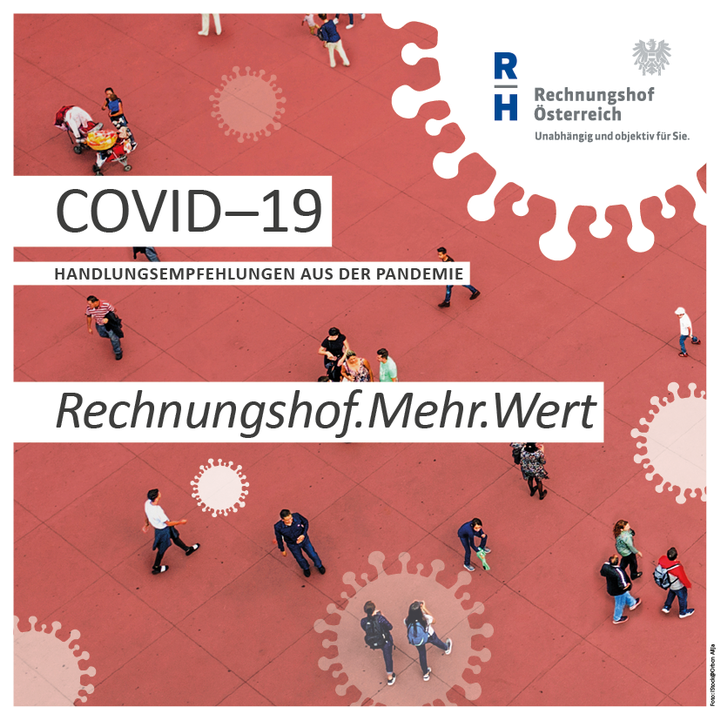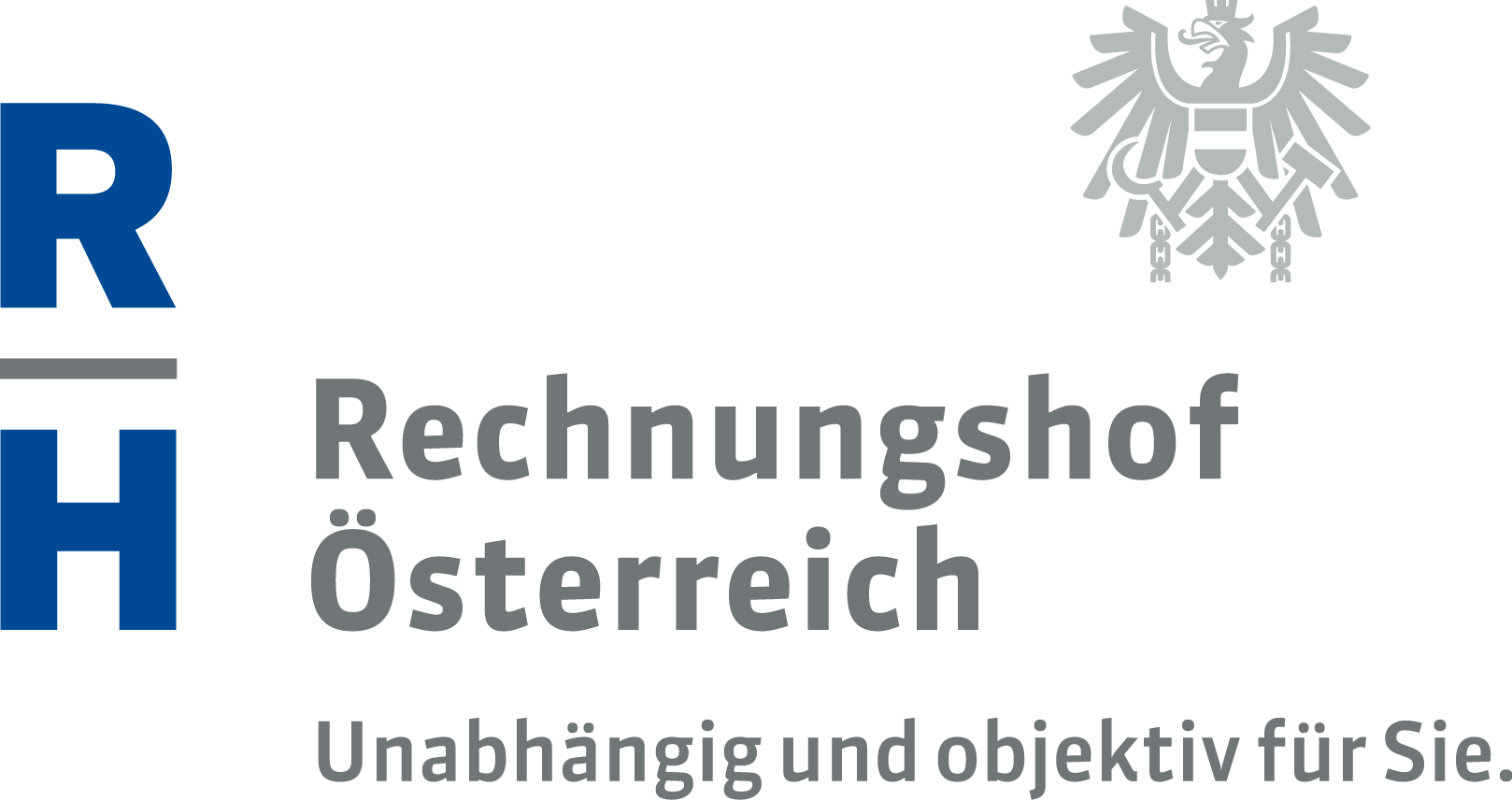The ACA publishes recommendations deducted from its COVID-19 reports

In its theme paper entitled “COVID-19 | Rechnungshof.Mehr.Wert” (“COVID-19 | the.ACA’s.added.value”), the Austrian Court of Audit (ACA) summarizes key findings established in its COVID-19 audit reports published to date. The corresponding audits focused on
- the COVID-19 aid measures;
- the topic of public finances and risks;
- municipalities and non-profit organizations;
- organization and digitalization in selected ministries;
- procurement; and
- healthcare.
With the theme paper, the ACA aims to fulfil its advisory function to a greater extent. After all, the ACA’s focus is not on criticism but on the question of how to react to similar situations in the future, in particular since EUR 47.7 billion in aid measures have already been paid out or approved as at 31 December 2022.
In the COVID-19 reports, the ACA highlights the following successful aspects of crisis management:
- the maintenance of healthcare services;
- the functionality of public institutions;
- the swift implementation of individual measures;
- the stabilization of the labour market.
However, the ACA also identified the following weaknesses:
- Only a limited picture of medical care and the use of healthcare services could be presented;
- Legal bases and contingency plans were outdated;
- There was no mutual cooperation and the processing structures proved to be inadequate;
- There were no control concepts; and
- The concepts for new forms of financial support were not sufficiently well thought out, a lack of accuracy transpired.
Based on the COVID-19 reports, the ACA deducts recommendations in four spheres of action:
- regarding the pandemic management;
- regarding the COVID-19 aid measures;
- regarding crisis-resistant organizations; and
- regarding an effective control system.
In concrete terms, the ACA makes the following recommendations for action:
- It has to be ensured that there is sufficient qualified professional staff; the day-to-day operations have to be safeguarded through appropriate equipment as well as continuity in key functions and committees in the Federal Ministry of Health.
- Up-to-date legal bases and contingency plans should be put in place.
- Properly functioning electronic reporting systems and interfaces could ensure that the data required for pandemic management are available.
- The interplay between the Federal Ministry of Health, hospitals and the independent healthcare sector should be clearly defined in order to ensure swift, coherent and consistent decisions.
- Aid measures should be accurate and needs-based in order to avoid multiple funding and overfunding. Funding objectives, responsibilities and parameters such as funding criteria should be clearly defined, even in situations that require rapid action.
- Financial support, e.g. for families, should be optimized in terms of target group-specific and societal benefits.
- Existing expertise and structures in the administration should be used as a matter of priority and knowledge transfer back to the administration should be ensured when external contracts are awarded.
- The standards of public procurement law as well as the principles of economy and efficiency should have to be complied with, even in exceptional situations.
- Standards for checking eligibility requirements should be set.
- Concepts for ex-post controls should be prepared.
- Funding transparency should be ensured through consistent recording in the existing transparency database.
Findings and recommendations deducted from the COVID-19 reports
— regarding the pandemic management
The ACA noted that the functionality of the structures of healthcare authorities – specifically of the supreme authority for public health matters, i.e. the Federal Ministry of Health – was limited. The Federal Government had not put in place the necessary basic conditions in terms of organization and personnel, even though the need for action in this area had been clearly demonstrated before the pandemic.
Likewise, legal bases and contingency plans were outdated.
Properly functioning electronic reporting systems and interfaces that are necessary for successful pandemic management were lacking. For example: district administrative authorities used their own IT applications, which meant that data could not be exchanged sufficiently.
The interplay between the Federal Ministry of Health, hospitals and the independent healthcare sector (i.e. Federal Government – provinces – Social Insurance Providers) was not clearly defined. Likewise, there was no crisis communication plan; coordinated guidelines for medium- and long-term strategic stockpiling of protective equipment and medical products should be arranged for.
— regarding the COVID-19 aid measures
As at the end of 2022, the Federal Government had paid out or approved EUR 47.7 billion in connection with the COVID-19 pandemic. COVID-19 aid measures in Austria were comparatively high by international standards and also the highest within the EU. At around EUR 2,600 per capita, pay-outs made in 2020 were more than twice as high as those made in Germany or Switzerland. Austria spent more than 10% of its GDP on COVID-19 aid measures. The EU-average amounted to 5.5%.
The ACA noted that the measures taken by the government provided for quick financial support during the crisis, strengthened the purchasing power of families, preserved jobs, stabilized Austria as a business location and safeguarded cultural institutions.
At the same time, unwanted effects arose: such as a lack of accuracy, the risk of misguided incentives and overfunding, deadweight effects and abuse as well as a risk of preserving structures that are not viable in the long-term.
As a result, the ACA recommended in its reports that responsibilities, funding objectives and parameters should be clearly defined. For example, in the case of some measures, various entities were involved in the preparation, implementation and control of guidelines. Funding objectives and criteria were not clearly defined. Furthermore, the required exchange of information and data was not possible in some funding systems: in the case of aids for artists and those working in culture, for example, an individual could receive funding from multiple funding pots.
Aid measures should be accurate and needs-based in order to avoid multiple funding and overfunding. For example: the short-time work subsidy was available to all companies and so attractive that the risk of deadweight effects tended to be increased. In the area of family benefits – we are talking about roughly EUR 1.034 billion in 2020 and 2021 –, some 80% were paid out under the name “COVID-19 child bonus” or in the form of the continued granting of the family allowance without supporting documents, without applications and without any further requirements.
— regarding crisis-resistant organizations
The ACA noted that thanks to the organizational measures taken by the administration the continuity of day-to-day operations could be ensured by means of IT equipment and telework.
However, due to a lack of personnel resources, the administration had to purchase services from third parties or have tasks performed by external service providers in many cases. This led to costs for external contract awards, which were mainly carried out by means of special procedures or direct awards due to time pressure, i.e. partly without comparative offers etc. However, the ACA reiterated that standards of public procurement law such as the principles of economy and efficiency have to be complied with, even in exceptional situations.
By relying on external service providers, the administration was not able to integrate the knowledge generated within the scope of these tasks into the existing administrative structures and thus got into dependencies and conflicts of interest. For example, COFAG – the COVID-19 Federal Financing Agency (COVID-19 Finanzierungsagentur des Bundes GmbH) – was established to process the financial COVID-19 measures. COFAG launched its operations de facto without its own staff. Due to a lack of personnel resources and funding practice of its own, external services had to be purchased to a large extent, in particular for legal advice and the examination of funding applications.
— regarding effective control systems
The use of public funds is subject to high standards of transparency and accountability. This applies in particular to the granting and subsequent control of public financial support. During the pandemic, the premise was often to facilitate unbureaucratic and swift processing. As a result, payments to funding applicants were often made without checking the essential eligibility requirements in detail. Without a – if need be, ex-post – control, there was no legal certainty and no evidence of the measures’ effectiveness and accuracy.
In its reports, the ACA recommended that standards for checking the eligibility requirements be set at any rate. This finding was based on the fact that, for example, central eligibility requirements were not or could not be systematically checked because eligibility criteria were not clearly defined. Also in the case of ex-post controls, appropriate concepts have to be prepared. For example, an ex-post control would have been particularly relevant for the financial support from the COVID-19 fund for artists and those working in culture since an individual could file an application with multiple institutions and be funded several times. Likewise, reclaims were not defined and planned only after all payments had been made. However, in the case of the COVID-19 short-term work fund, the ACA achieved a partial success with regard to this demand since it became apparent that wrongly settled hours lost were among the most frequent reports of suspected fraud. Upon the ACA’s recommendation, an essential element for increasing transparency was introduced in mid-2022: informing employees about the number of hours lost that their employer settled for them with the Public Employment Service Austria.
In view of the transparent presentation of funding, the ACA recommended that more attention be paid to ensuring that all benefits that were provided in connection with overcoming the pandemic are recorded in the transparency database and marked with “COVID-19”. This applies to both new benefits as well as add-ons to already existing benefits. Especially since the Federal Ministry of Finance did not report the COVID-19 special benefits in addition to the family allowance – EUR 818 million budget-intensive pay-outs – as COVID-19 benefits.
Additional information
Public finances – implications of the COVID-19 pandemic
- In the wake of lockdowns and supply chain disruption, economic growth plunged: from 2.4% in 2018 and 1.5% in 2019 to -6.5% in 2020.
- Inflation was on the rise.
- In 2019, the Federation still achieved a positive net result and was able to reduce its debt level in nominal terms. In the subsequent years, lower tax revenue as a result of the collapse in economic output coupled with tax deferrals for companies in order to maintain their liquidity during the pandemic had a considerable impact on the revenue side of the federal budget.
- The extensive aid measures to mitigate the effects of the COVID-19 pandemic had a particular impact on the expenditure side of the federal budget. Thus, a government deficit amounting to -8.0% of the GDP was recorded in 2020, which fell to -5.9% of the GDP in 2021. The forecast of -3.5% of the GDP for 2022 was based on a strong economic catch-up process.
- However, the ending COVID-19 measures were followed by new economic policy measures, among others due to the inflation and the war in Ukraine. Therefore, public sector spending will remain on a high level. The Federal Ministry of Finance expects net lending to amount to 2.9% of the GDP in 2023 and to 1.6% of the GDP in 2026.
- Since 2019, the public debt amounting to 70.6% of the GDP has risen to 82.9% in 2020 and to 82.3% in 2021. Before the outbreak of the pandemic, the Federal Ministry of Finance had expected the public debt ratio to decrease to 60.9% of the GDP in 2023.
Season 3 | Episode 6: Theme Paper: COVID-19 Recommendations for Action (in German)


